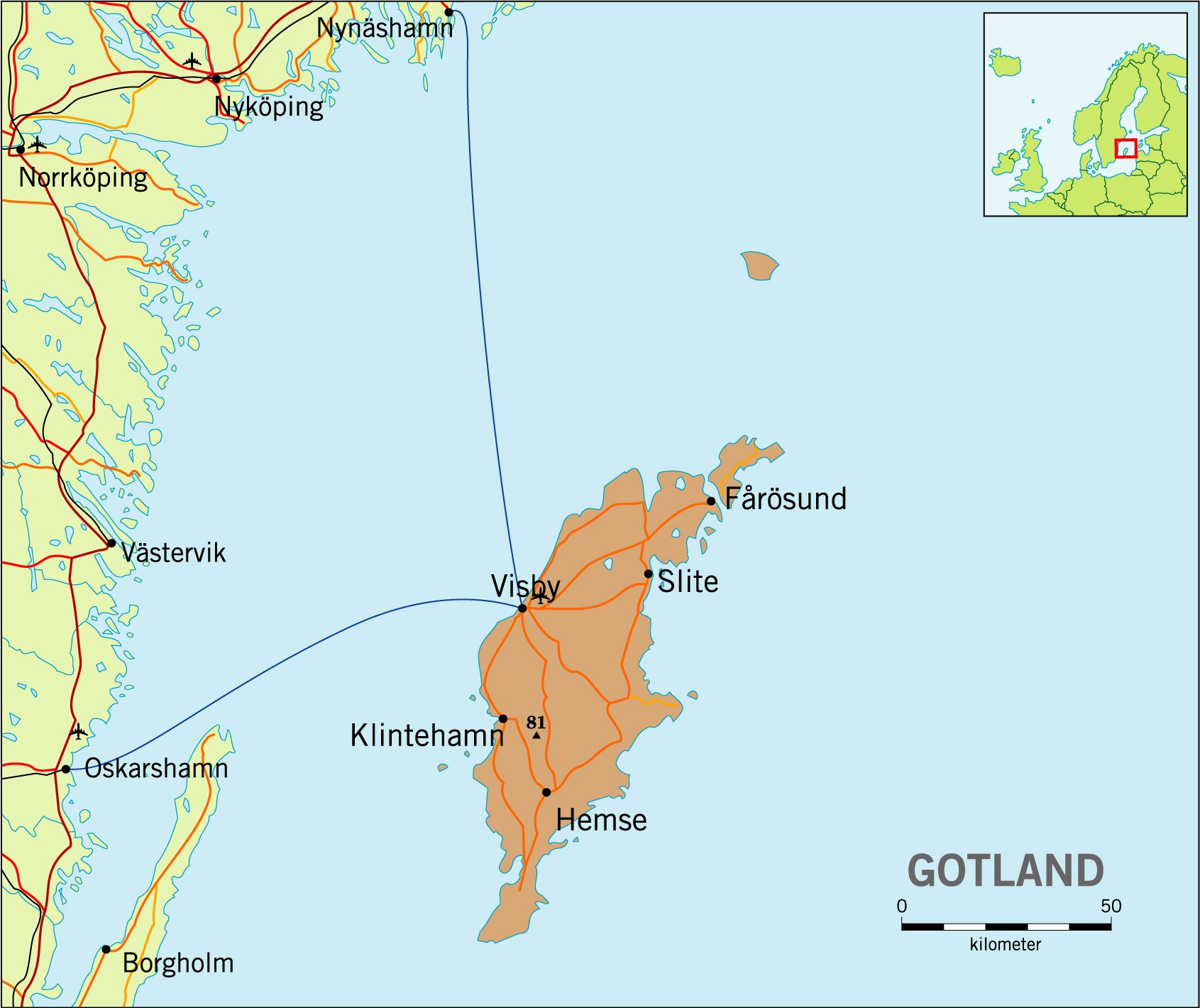
The stonewall surrounding Visby at Gotland. Photo: STIG HAMMARSTEDT, PRESSENS BILD
The public sector is the single largest employer. The local Council itself employed almost 7 300 people in 2005.
Average unemployment in Gotland has increased from 3.5 percent in 2000 to 4.8 percent in 2005. During 2005, at any one time, some 2.8 percent of the labour force took part in one of the various unemployment schemes. This means that total unemployment was 7.6 percent in Gotland, compared to 6.3 percent for Sweden as a whole.
All of Gotland, apart from Visby and its immediate surroundings, is eligible for EU funding in the LEADER+ programme. This programme supports untried, innovative development strategies and aims to contribute to the creation of new employment.
In terms of EU-programmes, Gotland is entitled to Objective 2 and 3 funding. In 2005 about 14 million SEK was allocated to Gotland through the Objective 3 programme. Gotland also receives important EU funding for agriculture and rural development. The total figure was SEK 245 million in 2004.
Estimates suggest that EU funding accounts for around 20 percent of the turnover of Gotland's agricultural sector. It is therefore of great importance for employment generally and to the related food industries in particular.
Gotland is located in the middle of the Baltic Sea, 90 kilometres from the Swedish coast. In 2005, Gotland had 57 600 inhabitants some 22 600 of whom lived in Visby.
Communication links to the island have improved in recent years. The fastest ferry journey to Nynäshamn lasts a little less than three hours. There are also now daily flights to Stockholm and to Linköping and Norrköping.
Gotland is an island created from a coral reef, rising out of the sea where there was once only water. Gotland has a typical coastal climate, with fairly mild winters and pleasant summers. The distance between the southernmost and northernmost points is 176 km. The island is, at is widest point, 50 km from coast to coast.

Click to view larger image.